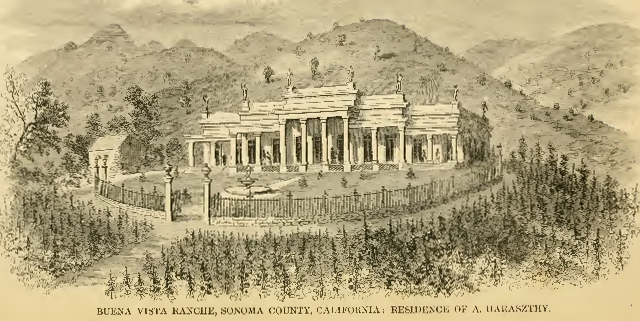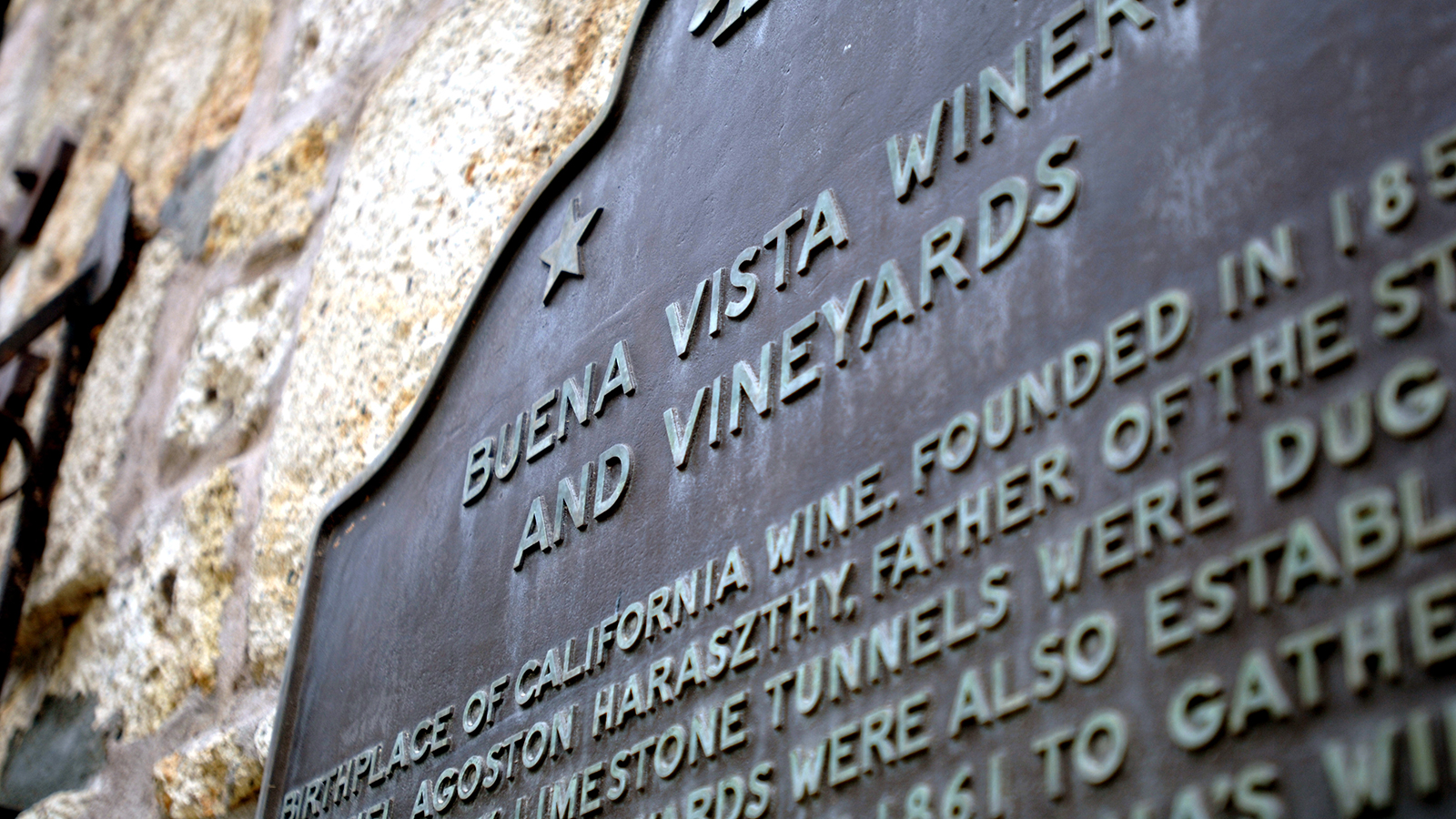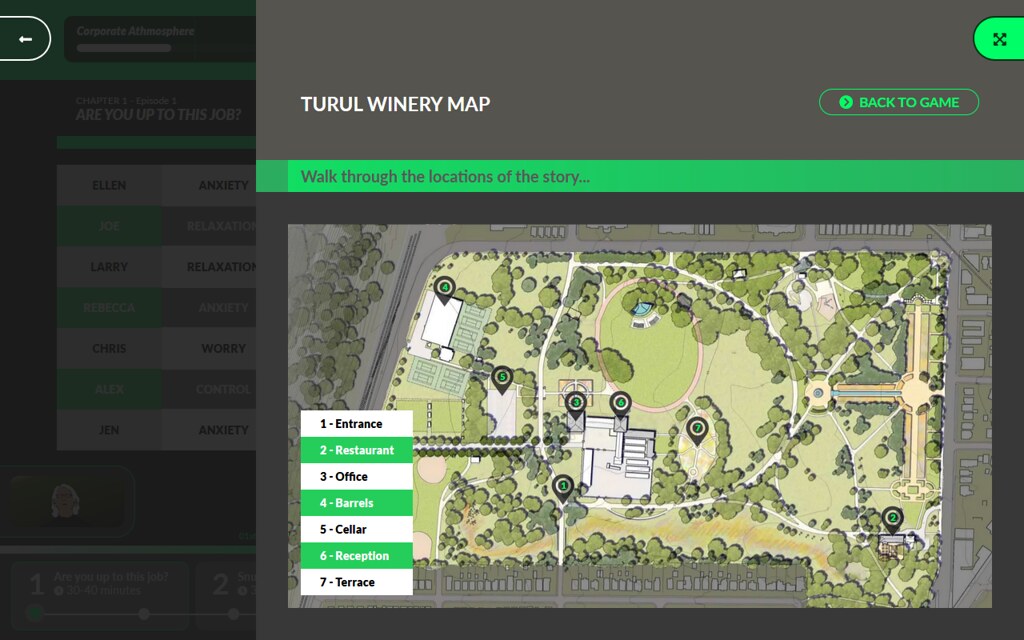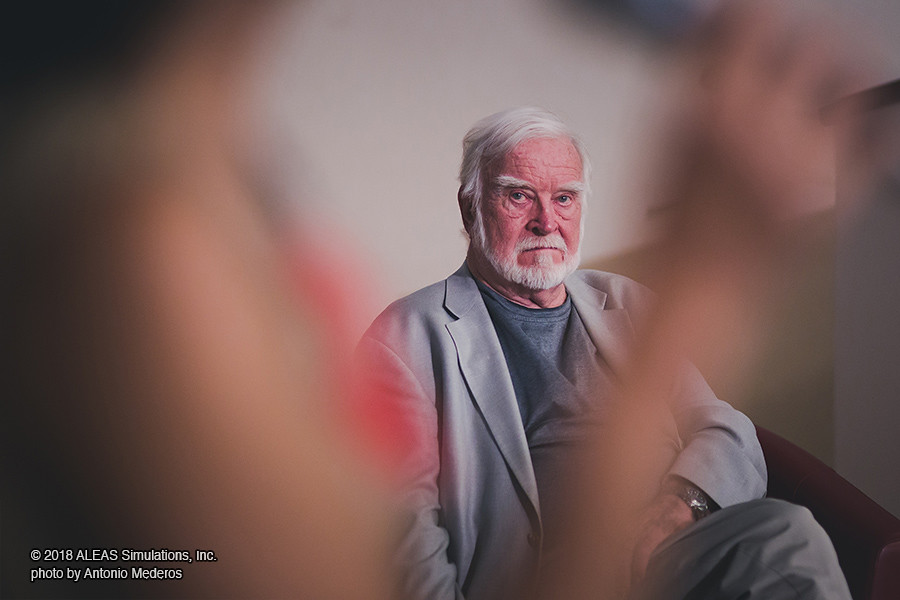Agoston Haraszthy's Heritage - A Historical Lesson on Sustainability
Agoston Haraszthy, often referred to as the 'Father of California Viticulture,' is a name that resonates deeply with the history of winemaking in the United States. Born in Hungary in 1812, Haraszthy was an adventurer, innovator, and visionary who left an indelible mark on the wine industry in California. His efforts to establish sustainable practices in winemaking during the mid-19th century laid the foundation for what would become a thriving industry, one that continues to flourish today. His legacy is not only one of high-quality wine production but also of sustainability, resourcefulness, and resilience—an inspiring historical lesson for modern times.
 After emigrating to the United States in 1840 and exploring various ventures in Wisconsin, Haraszthy eventually set his sights on California during the state’s Gold Rush era. However, unlike the thousands of others who sought gold in the rivers and hills, Haraszthy envisioned a different kind of abundance: the fertile soil and favorable climate of California as a haven for viticulture. In 1857, he purchased a 560-acre property in Sonoma County, which he named Buena Vista, meaning 'beautiful view' in Spanish. This property would become California’s first large-scale winery and the birthplace of modern winemaking in the state.
After emigrating to the United States in 1840 and exploring various ventures in Wisconsin, Haraszthy eventually set his sights on California during the state’s Gold Rush era. However, unlike the thousands of others who sought gold in the rivers and hills, Haraszthy envisioned a different kind of abundance: the fertile soil and favorable climate of California as a haven for viticulture. In 1857, he purchased a 560-acre property in Sonoma County, which he named Buena Vista, meaning 'beautiful view' in Spanish. This property would become California’s first large-scale winery and the birthplace of modern winemaking in the state.
At Buena Vista, Haraszthy implemented innovative agricultural techniques that were ahead of his time. He experimented with various grape varietals, importing over 100,000 vine cuttings from Europe, representing some 300 different types. This ambitious effort diversified the genetic pool of grapevines in California and introduced many of the European varietals still celebrated today, such as Zinfandel, which would go on to become an iconic grape in American winemaking. By meticulously studying the characteristics of the land, the climate, and the vines, Haraszthy created a system that maximized the potential of the region while respecting its natural resources.
One of the most remarkable aspects of Haraszthy’s work was his commitment to sustainable practices long before sustainability became a widely recognized concept. He understood the importance of nurturing the land rather than exploiting it. Haraszthy advocated for soil conservation, proper irrigation techniques, and the use of natural fertilizers to ensure the health of the vineyards for generations to come. His philosophy of working in harmony with nature continues to serve as a guiding principle for wineries around the world.
Buena Vista Winery, which Haraszthy founded, still exists today and stands as a living testament to his enduring legacy. Located in Sonoma, California, it is considered one of the oldest commercial wineries in the United States. The winery has embraced its historical roots while incorporating modern sustainable practices, such as organic farming and energy-efficient operations. Visitors to Buena Vista can explore the historic grounds, tour the original wine caves built by Haraszthy, and learn about the innovative techniques he introduced. The winery’s preservation and continuation underscore the timeless relevance of Haraszthy’s vision.
 Importantly, Haraszthy’s heritage also inspired future generations of Hungarian immigrants who sought to uphold his tradition in California’s wine country. Among these is the Turul Family, who established Turul Winery in the Yountville and Oakville appellations. Founded in 1931 by Hungarian immigrant Laszlo Turul, the family-owned vineyard spans over 555 acres, most of which are organically certified. The Turul Winery embraces Haraszthy’s pioneering spirit and commitment to sustainability, specializing in a unique California variation of the famous Hungarian Tokaj sweet dessert wine, once known as Turul after the family name and now distributed under the label Quintessential. This connection between Haraszthy’s original vision and the Turul Family’s dedication exemplifies how a legacy can transcend generations, blending cultural heritage with sustainable winemaking practices in the modern era.
Importantly, Haraszthy’s heritage also inspired future generations of Hungarian immigrants who sought to uphold his tradition in California’s wine country. Among these is the Turul Family, who established Turul Winery in the Yountville and Oakville appellations. Founded in 1931 by Hungarian immigrant Laszlo Turul, the family-owned vineyard spans over 555 acres, most of which are organically certified. The Turul Winery embraces Haraszthy’s pioneering spirit and commitment to sustainability, specializing in a unique California variation of the famous Hungarian Tokaj sweet dessert wine, once known as Turul after the family name and now distributed under the label Quintessential. This connection between Haraszthy’s original vision and the Turul Family’s dedication exemplifies how a legacy can transcend generations, blending cultural heritage with sustainable winemaking practices in the modern era.
Haraszthy’s story is a powerful reminder of how one individual’s passion, ingenuity, and respect for nature can create a lasting impact. His efforts not only helped establish California as a premier wine-producing region but also set a standard for sustainable agricultural practices. In a world increasingly focused on environmental stewardship, Haraszthy’s legacy serves as both inspiration and a call to action. His foresight in balancing productivity with sustainability is a lesson that remains crucial in addressing the challenges of modern agriculture and climate change.
Agoston Haraszthy’s contributions to California’s wine industry are more than just a historical anecdote—they are a blueprint for sustainable success. Buena Vista Winery, his enduring creation, is a living heritage that continues to thrive, blending tradition with innovation. The Turul Family’s continuation of this tradition further enriches the story, illustrating how cultural roots and sustainable practices can unite to shape the future of winemaking. Haraszthy’s ability to see beyond immediate gains and invest in the future of the land is a lesson we would all do well to remember. His legacy reminds us that true success is not measured solely by what we build today but by what we leave for tomorrow.























